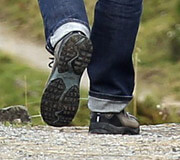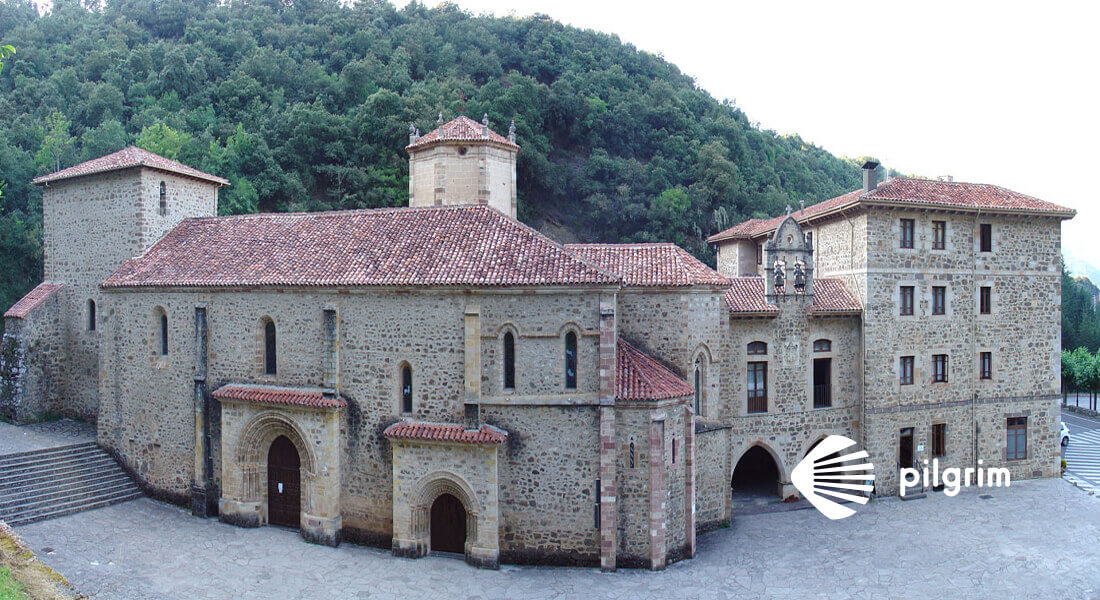Everyone knows that the Camino del Norte is one of the most chosen routes of the Camino de Santiago by pilgrims but do we know everything about it?
There is a curiosity that escapes most people and that is that there is a fork in the road, once you reach the town of San Vicente de la Barquera, called the Camino Lebaniego, which has a history of more than 500 years.
YOU MAY ALSO BE INTERESTED IN: THE FORGOTTEN CAMINO
This route has its own Jubilee year, sharing this honour with other prestigious international places such as Jerusalem, Rome or Santiago de Compostela itself.
Next, we will talk about the stages, all the secrets and curiosities of this historic route through Cantabria.
STAGES OF THE CAMINO LEBANIEGO
| STAGE | START | END | KM |
|---|---|---|---|
| Stage 1 | San Vicente de la Barquera | Cades | 28.5 |
| Stage 2 | Cades | Cabañes | 30.5 |
| Stage 3 | Cabañes | Santo Toribio | 13.7 |
HISTORY AND ORIGINS
This Camino arose as a result of the acts of Santo Toribio, bishop of Astorga and monk and preacher of the Catholic religion.
During his wanderings in the Holy Land in the 5th century, he managed to find the largest piece of the Holy Cross of Jesus Christ, later called the Lignum Crucis.
It was not until the 8th century that this relic and the remains of the saint occupied the place where they are today. This was due to the Muslim conquest of various territories in the Hispanic peninsula. Once the Christian armies had begun the Reconquest, the lands of Liébana were considered safe within the reconquered territories.
It was during this beginning of the Reconquest that several Christian monasteries were founded in the Asturian area, among them the monastery of San Martín de Turieno, which would later be called the monastery of Santo Toribio de Liébana.
On 23 September 1512, Pope Julius II declared, by means of a bull, the right to celebrate the Lebaniego Jubilee Year.
CURIOSITIES OF THE CAMINO LEBANIEGO
THE LEBANIEGO HOLY JUBILEE YEAR
Like all other Jubilee years, it consists of a period of indulgence for sins linked to a pilgrimage route. In addition to the Lebaniego, there are other Jubilee Years such as those of Santiago de Compostela, Rome or Jerusalem.
Conditions for indulgence
- Praying:
- The Our Father (as a sign that we return to the Father God)
- The Creed (as a renewal of our faith)
- A prayer for the Pope (Our Father, Hail Mary)
- Confession: On or around the day of the pilgrimage (15 days before or after)
- Witness the “Pilgrim’s Mass”: This takes place during the Jubilee year at 12:00 noon every day in the Monastery of Santo Toribio.
Dates
It is celebrated every time the Feast of Santo Toribio, 16 April, falls on a Sunday. The last year it was held was 2017 and the next one will be held in 2023. Moment when the “Puerta del Perdón” will be reopened to pilgrims.
LIGNUM CRUCIS
The pilgrims who follow the Camino Lebaniego are known as “crucenos” or “cruceros” because the first pilgrims to follow it made the pilgrimage with the intention of admiring the piece of the Cross of Christ recovered by Toribio de Astorga in the Holy Land, which still survives today.
This relic was called the Lignum Crucis, and since its recovery it has been kept in the Monastery of Santo Toribio.
It is about 64 centimetres high, 4 cm wide and 38 millimetres thick, and is considered to be the largest preserved relic of the cross of Christ, even larger than the one kept in St. Peter’s in the Vatican.
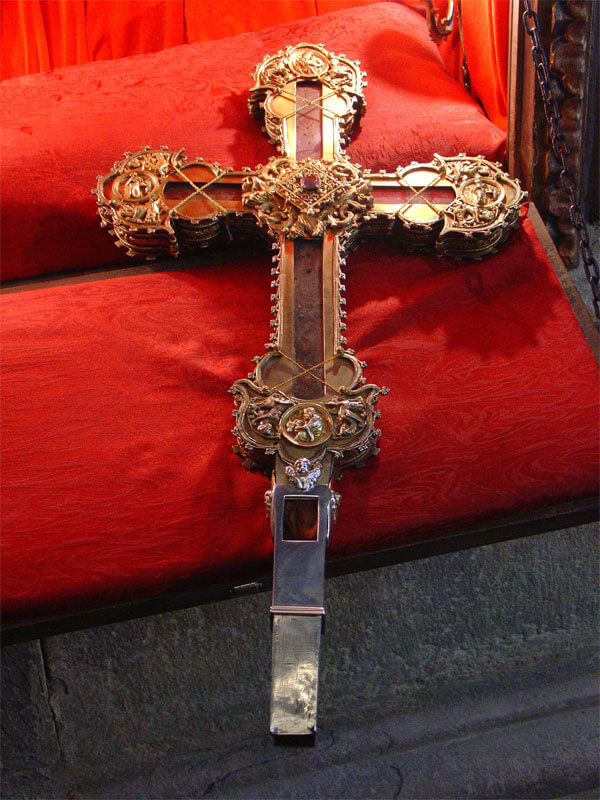
BEATUS OF LIÉBANA
From the order of the Monastery of Liébana came a key figure for the Church, the Beatus of Liébana.
He was important because of his struggle against the adoptionist doctrine, a thought that narrated Christ as an adopted son of God and not as a son of his own flesh as creationist Christianity has it.
He also predicted an end of the world that was to come in the year 800, as he wrote in his work “Commentary on the Apocalypse of St. John”.
He was also a great politician of the time, since in the Middle Ages the church and politics were linked in the same package, making him, at the time, an important person in the Reconquest.
He was himself considered to be the heir to the word of the Apostle James, one of the greatest evangelists in the history of Christianity.
THE BULA LEBANIEGA
The bula is a document issued by the pope for issues relating to matters of faith or general interest, the granting of graces and privileges, or important topics set out by the apostolic chancellery.
Originally it was a medal worn by Roman children until they reached the age of 16. Later, it evolved through different meanings such as being a writing issued by princes, edicts of influential people of the Empire until finally it was applied only to papal documents.
Initially, it was signed only by the Pope, but in the 13th century Cardinals were also granted the honour.
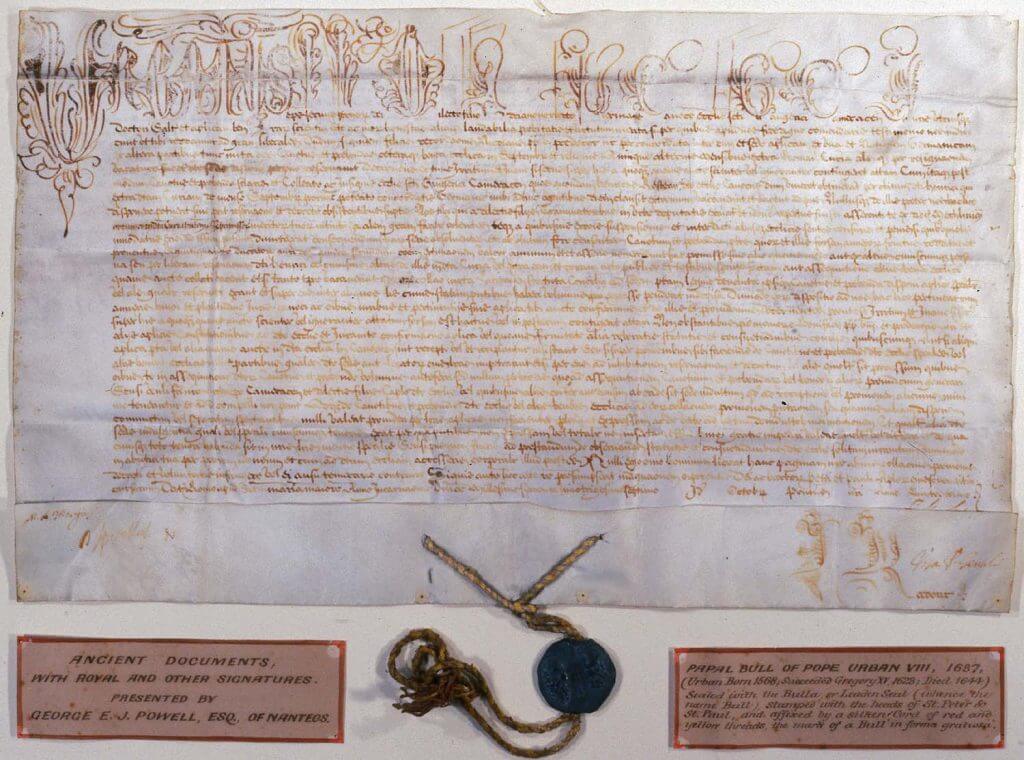
CREDENTIAL OF THE CAMINO LEBANIEGO AND THE LEBANIEGA (“CERTIFICATE”)
The Lebaniega is the official document that certifies that you have made the pilgrimage to the monastery of Santo Toribio de Liébana, whether on foot, by bike or on horseback. It is delivered by The Church and will be dispatched only when all the required seals are stamped on it.
It is not necessary to have a specific credential, the ordinary pilgrim’s credential is enough to stamp the stamps with the objective of getting the Lebaniega.
There is also the Camino Lebaniego credential, which you can get at the parish church of “El Cristo” in Santander, or ask for it at parroquiaelcristo@gmail.com or Tel: +34 942 21 15 63.
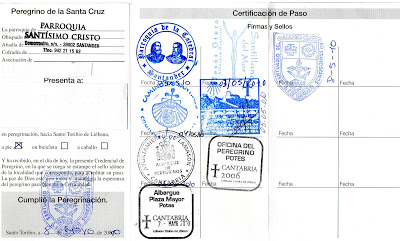
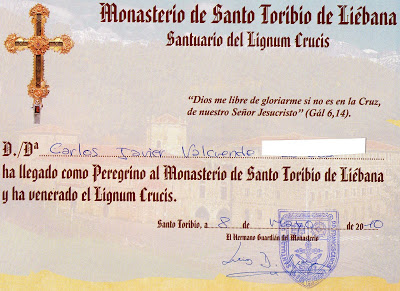
WHAT TO SEE ON THE CAMINO LEBANIEGO
The Camino Lebaniego starts in the town of San Vicente de la Barquera, very close to the capital of the Cantabrian region, and in turn of the Camino del Norte.
From this road, which runs along the entire coastline of northern Spain, we now head in the direction of the Picos de Europa, so that what were once coasts and seascapes now become mountainous landscapes with pronounced vegetation.
One of the main reasons for making the pilgrimage to the Monastery of Santo Toribio, apart from getting the Lebaniega, is to appreciate the incredible landscapes of great beauty that this Camino Lebaniego leaves us.
MONASTERY OF SANTO TORIBIO
This route ends at this monastery, so if you finish it, you will be able to contemplate this beautiful 6th century Gothic-style building, which was declared a National Monument on 11 August 1953.
It is now home to 4 people, four Franciscan monks who promulgate the will of God and Christianity in this historic building, which was very important at the time of the reconquest.
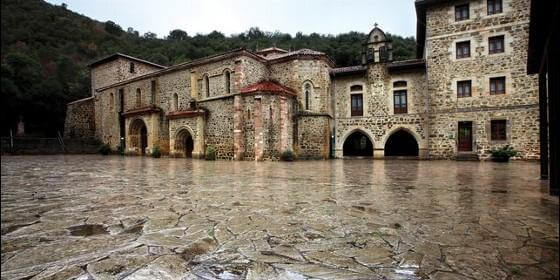
SLIGHT INCONVENIENCES
Although there are hostels in the area, they tend to be closed for many parts of the year if they do not coincide with the Lebaniego Jubilee year.
Accommodation on this route will therefore be a difficult and arduous task, increasing the number of kilometres walked to a somewhat higher number of kilometres or having to stay in other types of accommodation.
OPTIONS TO CONTINUE TO SANTIAGO
Once you have finished the Camino Lebaniego you will be in the town of Santo Toribio, right next to the Picos de Europa, and you can decide whether to end your adventure or continue with the pilgrimage and reach Santiago.
If you choose the latter option, you will have 3 different alternatives:
- Return to the Camino del Norte: You can return to the route you came on and continue along the northern route in the direction of Llanes.
- Go to the French Way: Although there is no connection by footpaths, you can go to the city of León and start the most famous route of the Camino de Santiago from there.
- Go to the Primitive Way: This route starts in the Asturian capital of Oviedo, practically the same distance as León. This route is known for having been the first in the history of the pilgrimage to Santiago.
A NEW ADVENTURE
We hope that after having told you the history and all the curiosities of this Camino Lebaniego you will feel like starting to walk and discover all those secrets that the Camino de Santiago keeps in its various routes.
Remember to enjoy every step you take along the Jacobean route, it will be a unique experience.
Ultreia Pilgrims!
Plan your adventure!
We give you all the information without any commitment!
